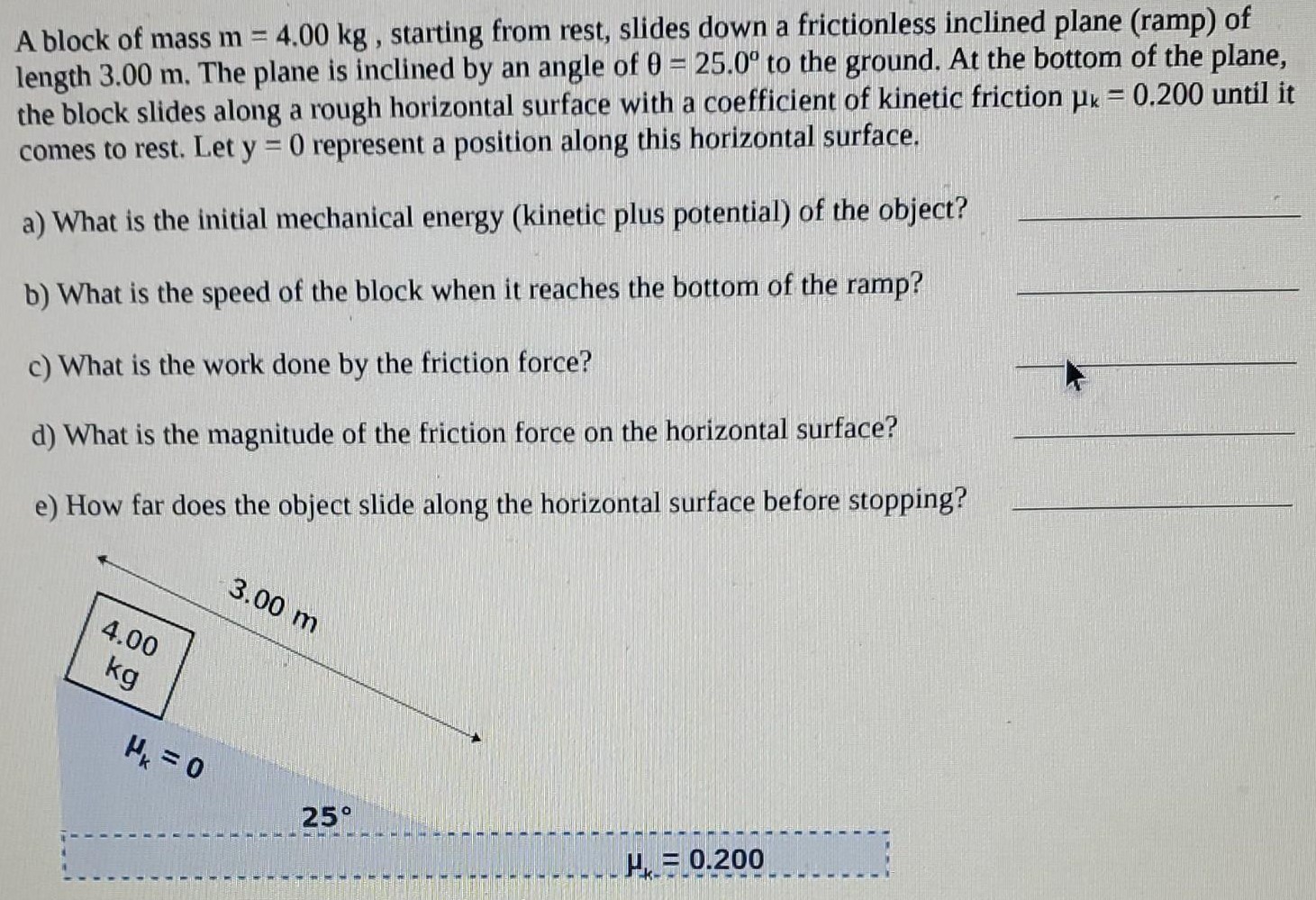A block of mass m = 4.00 kg, starting from rest, slides down a frictionless inclined plane (ramp) of length 3.00 m. The plane is inclined by an angle of θ = 25.0∘ to the ground. At the bottom of the plane, the block slides along a rough horizontal surface with a coefficient of kinetic friction μk = 0.200 until it comes to rest. Let y = 0 represent a position along this horizontal surface. a) What is the initial mechanical energy (kinetic plus potential) of the object? b) What is the speed of the block when it reaches the bottom of the ramp? c) What is the work done by the friction force? d) What is the magnitude of the friction force on the horizontal surface? e) How far does the object slide along the horizontal surface before stopping?
